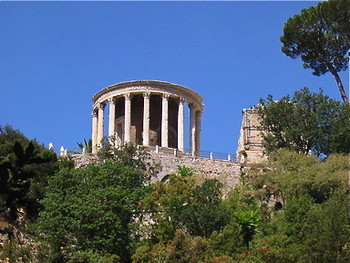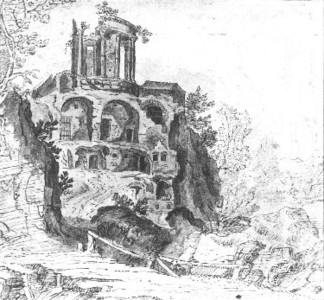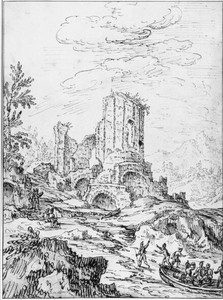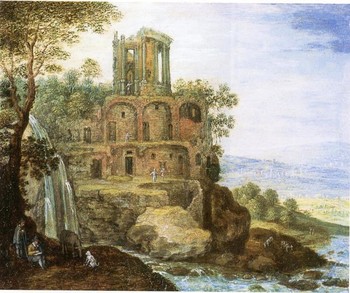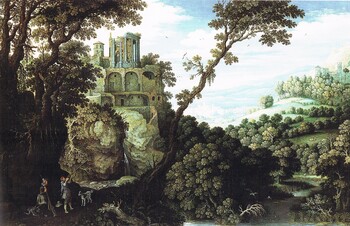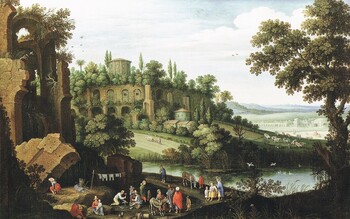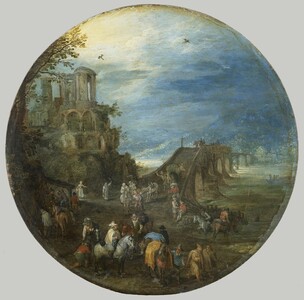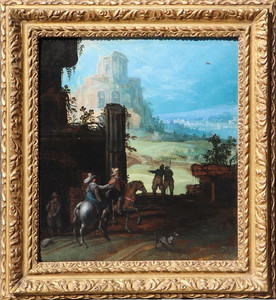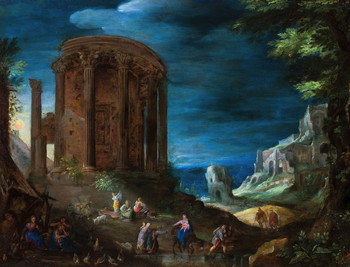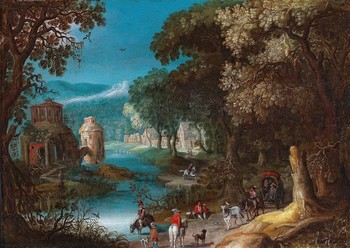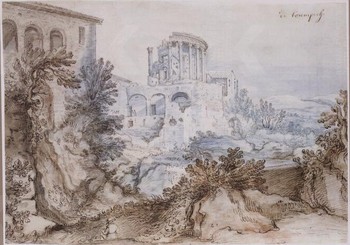8.600 €
A view of Tivoli
Oil on panel : 37,2 X 32,6 cm
Monogrammed lower centre on the top of the rock “DVH”
Frame : 48,9 X 44,7 cm
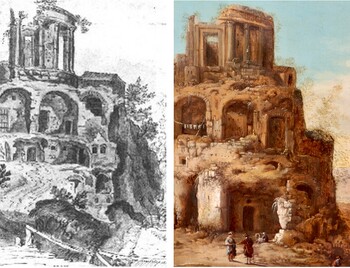
In short
The ruins of the Round Temple at Tivoli, near Rome, were a favourite subject of Flemish and Dutch painters during the early 17th century. Dirck Verhaert specialised in Italianate views, though he himself had never travelled to Italy (which was not uncommon).
The left part of our composition, with the hill crowned by that temple, stands close to a drawing in the Fine Arts Museum of Brussels that is attributed to Paul Bril(1553/54 – 1626). Bril was an important and influential Flemish, Mannerist painter, active in Rome.
About Dirck Verhaert
Dutch painter
Possibly born in Haarlem circa 1610 – died in or after 1675, probably in Leiden.
Painter of Italianate landscapes.
Our painter lived and worked in three different Dutch towns: The Hague, Haarlem and Leiden. He never travelled to Italy, although he regularly painted Italianate subjects, based on descriptions and on depictions in engravings, drawings and paintings by other artists.
Active in The Hague, where he joined the local Guild of Saint Luke in 1631.
Active from 1637 onwards in Haarlem, where he joined the painters ‘guild in 1638. In 1641 he married Wilhelmina, a sister of the battle scene painter Gerrit van Santen in Haarlem. His last mention in Haarlem is in August 1642, though he probably remained active here for a long time.
Active in Leiden from 1664 onwards. Documented here until 1675.
Strangely enough paintings by Verhaert go regularly hidden under erroneous attributions to the contemporary Flemish painter Daniel van Heil, although both their styles of painting are very different. Both painters used the same “DVH” monogram.
About the Round Temple of Tivoli
The town of Tivoli lies in the province of Lazio, some 30 km NE of Rome. Today it is best known for its huge villas: the ruins of the one from the Roman emperor Hadrian (2nd century AD) and the 16th century Villa d’Este.
The ancient town’s acropolis was situated above the waterfalls of the Aniene river. Here stood two temples: a round temple said to be associated with Vesta and a rectangular one in honour of the Tiburtine Sibyl. In our painting Verhaert has represented the round temple.
Following a terrible flood (that destroyed many of the oldest houses of the town) in November 1826 Pope Gregory 16th had the course of the Aniene diverted into two tunnels. Originally the Aniene made a wide curve round the acropolis and then fell in 4 cascades, now there is one big waterfall in the park of the Villa Gregoriana.
It is not known whom the round, early 1st century BC, so-called Temple of Vesta (which also used to be called the Temple of the Sibyl) was originally dedicated to. During the Middle Ages it was changed into a rather shabby, small church building (of Santa Maria Rotonda) and then transformed again during the 19th century into its present, ‘original’, ruined state. Being one of the best-known monuments of the Roman Campagna, laying in a romantic setting, it has attracted for many centuries numerous tourists and artists.
Verhaert painted mostly rather dull landscapes for a modern eye: snapshots of a winding river, buildings at left or at right in the foreground and a hilly landscape in the background. Here he has divided his composition in two: a plunging view of the river Aniene at right and a stunning view of the former acropolis of Tivoli crowned by the Round Tivoli at left.
Why should you buy this painting?
Because it is a great view of Tivoli.
Because I discovered the link with the Bril drawing.
Comparative paintings
Click photos for more details

